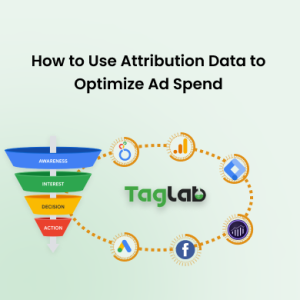Your cart is currently empty!
Repeat Purchase Rate Metric Definition
Posted by:
|
On:
|
Repeat Purchase Rate measures the percentage of customers who make more than one purchase over a specific period. It helps businesses understand customer loyalty and retention by indicating how well they are turning one-time buyers into repeat customers, which is crucial for long-term growth and profitability.
Detailed Explanation
What is Repeat Purchase Rate?
Repeat Purchase Rate is a key metric that evaluates the proportion of customers who return to make another purchase after their initial one. It provides insights into customer satisfaction, loyalty, and the effectiveness of retention strategies. A higher Repeat Purchase Rate indicates that customers are finding value in a brand’s products or services, which can lead to sustained revenue growth.
How it Works?
Repeat Purchase Rate is calculated by dividing the number of customers who made more than one purchase by the total number of customers, expressed as a percentage:
Repeat Purchase Rate = (Number of Repeat Customers / Total Number of Customers) x 100
This metric helps businesses assess their ability to retain customers and generate consistent sales from their existing customer base, complementing customer acquisition efforts.
Types of Repeat Purchase Insights
- Loyalty Program Performance: Tracks how effective loyalty programs are in encouraging customers to make repeat purchases.
- Seasonal Repeat Purchases: Measures repeat purchase rates during specific seasons or promotional periods, providing insights into customer behavior.
- Subscription Renewal Rates: Focuses on the rate at which customers renew subscriptions or recurring services.
Illustrative Scenarios
Examples
- An online beauty brand tracks its Repeat Purchase Rate to measure customer retention. A 30% repeat rate indicates that 30 out of every 100 customers return to make another purchase after their first order.
- A SaaS company measures how many of its users renew their subscriptions after the initial term. A 60% Repeat Purchase Rate suggests strong customer satisfaction and loyalty.
Segmentation
Repeat Purchase Rate can be segmented by customer demographics, product categories, or time periods to identify which segments are most likely to make repeat purchases. For example, businesses can analyze whether younger customers have a higher repeat rate compared to older customers or if certain product lines encourage more repeat purchases.
Factors Influencing Repeat Purchase Rate
- Customer Satisfaction: Happy customers are more likely to return for additional purchases, driving up the repeat purchase rate.
- Product Quality: High-quality products that meet customer expectations are key to encouraging repeat purchases.
- Loyalty Programs: Rewards programs and exclusive discounts can incentivize customers to return for future purchases.
- Personalized Marketing: Tailoring marketing messages and offers to individual customer preferences can encourage repeat buying behavior.
- Customer Service: Excellent customer service experiences can foster loyalty and increase the likelihood of repeat purchases.
Strategies to Improve Repeat Purchase Rate
- Implement a Loyalty Program: Offer points, discounts, or rewards for repeat purchases to encourage customer loyalty.
- Follow-Up Emails: Use email campaigns to follow up with customers after their first purchase, offering related product suggestions or discounts.
- Personalize Recommendations: Use customer data to recommend products or services that align with their past purchases and preferences.
- Enhance Product Quality: Continuously improve product quality to ensure that customers have a positive experience, making them more likely to return.
- Offer Exclusive Promotions: Create time-limited promotions or early access sales for existing customers to incentivize repeat purchases.
Benchmark Indicators
Understanding Repeat Purchase Rate benchmarks by industry helps businesses evaluate their customer retention efforts and set realistic goals for increasing loyalty:
- Technology Industry: Repeat Purchase Rate benchmarks typically range from 15% to 25%, especially for software renewals and accessory purchases.
- Healthcare Industry: Repeat Purchase Rate benchmarks range from 20% to 30%, focusing on recurring appointments or product reorders like supplements.
- Financial Services: Repeat Purchase Rate generally ranges from 10% to 20%, particularly for additional services or account upgrades.
- E-commerce: Repeat Purchase Rate benchmarks range from 20% to 30%, with variations depending on product categories like apparel, electronics, or consumables.
- Education Sector: Repeat Purchase Rate can range from 10% to 20%, influenced by course renewals or sign-ups for additional programs.
- Real Estate: Repeat Purchase Rate benchmarks range between 5% to 10%, particularly for repeat buyers or investors in property management services.
Tools for Measuring Repeat Purchase Rate
- CRM Systems: Platforms like Salesforce track customer purchase history and help calculate repeat purchase rates over time.
- E-commerce Analytics Tools: Tools like Google Analytics and Shopify’s built-in analytics track repeat customer behavior and purchases.
- Email Marketing Platforms: Platforms like Mailchimp and Klaviyo can track the effectiveness of follow-up campaigns in driving repeat purchases.
Common Pitfalls and Mistakes
- Not Offering Incentives: Without incentives like loyalty programs, customers may have little reason to return for additional purchases.
- Ignoring Customer Feedback: Failing to address issues or complaints from first-time buyers can result in lower repeat purchase rates.
- Overlooking Personalization: Sending generic marketing messages may fail to resonate with customers, reducing the chances of repeat purchases.
- Focusing Only on Acquisition: A heavy focus on acquiring new customers without retention strategies can limit repeat purchase growth.
- Underestimating Product Quality: Product quality issues can deter customers from returning, negatively impacting repeat purchase rates.
Frequently Asked Questions
What is Repeat Purchase Rate?
Repeat Purchase Rate measures the percentage of customers who make more than one purchase, helping businesses assess customer loyalty and retention.
Why is Repeat Purchase Rate important?
Repeat Purchase Rate is important because it indicates how well a brand retains its customers, contributing to sustained revenue growth and reducing reliance on new customer acquisition.
How can I improve my Repeat Purchase Rate?
To improve Repeat Purchase Rate, implement loyalty programs, use follow-up emails, personalize recommendations, enhance product quality, and offer exclusive promotions.
What factors influence Repeat Purchase Rate?
Factors influencing Repeat Purchase Rate include customer satisfaction, product quality, loyalty programs, personalized marketing, and customer service.
What are good benchmarks for Repeat Purchase Rate?
Good benchmarks for Repeat Purchase Rate vary by industry, with rates above 20% considered good, while rates below 10% suggest a need for improved retention efforts.



